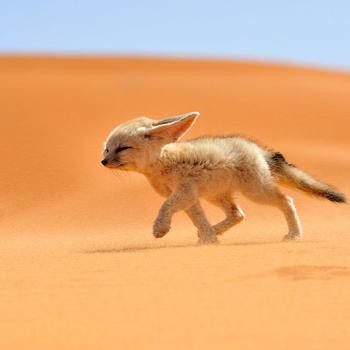Since you have #7# letters, one could be tempted to answer #7!#.
Nevetheless, you can see that #6# letters are "unique", and the seventh letter is another "A".
So, we have #6# distinct letters, and one of them repeats twice. This means that, given a certain permutation of those letters, if we flip the two "A"s we will get the same word. I'll colour the two "A"s with different colours to show you what I mean: assume we start from the permutation
#GL\color(red)(A)BER\color(blue)(A)#
Now, let's flip the two "A"s: we will get
#GL\color(blue)(A)BER\color(red)(A)#
Are these permutations different? Well, with the colours we can see how they differ, but if you just look at the words, we wrote "GLABERA" twice, so they are the same permutation.
This means that, if we answer #7!#, we are counting each word twice, like we did with GLABERA here, counting the red-blue and the blue-red permutations as two distinct permutations, even though they actually lead to the same word.
So, the answer is #(7!)/2#, so that we can group together all this couples and count them only once.
In general, if you have a word composed by #n# letters in total, with only #r# distinct letters, where the first letter repeats #k_1# times, the second #k_2# times, etc, you have the following number of possible distinguishable anagrams:
#(n!)/(k_1!k_2!...k_r!)#
For example, the anagrams of MISSISSIPPI are
#(11!)/(4!4!2!)#
Since there are #11# letters in total (numerator), but there are repeating letters: four "I"s, four "S"s and two "P"s (denominator)

